Beetle management in plants is the practice of preventing and controlling the damage caused by various types of beetles that feed on crops and ornamental plants. Beetles are insects, order Coleoptera, which is the largest, most diverse group of animals on Earth. There are more than 400,000 species of beetles, many of which are pests of agriculture and horticulture.
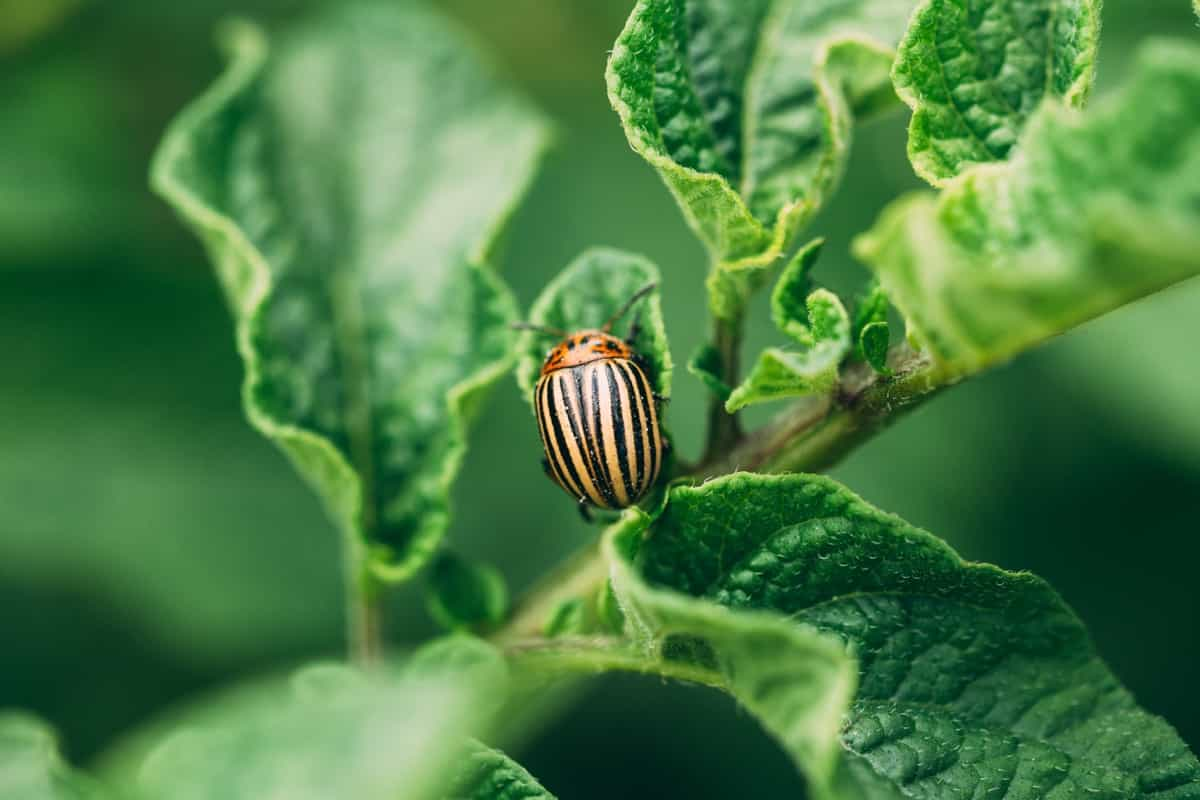
Beetles can affect plants in different ways, such as chewing holes in leaves, stems, flowers, fruits, roots, and tubers, boring into stems and trunks, transmitting diseases and pathogens, or reducing the quality and yield of the produce. Beetle management in plants involves using various methods, such as cultural, physical, biological, chemical, or integrated pest management (IPM), to reduce the population and impact of beetles on plants.
Beetle Management in Plants
Types of Beetles that Affect Crops and Plants
Japanese Beetles (Popillia japonica): These are metallic green beetles with coppery wing covers that feed on more than 300 plant species, including roses, grapes, beans, corn, soybeans, fruits, and vegetables. They skeletonize the leaves by eating the tissue between the veins, leaving behind a lace-like appearance. They also feed on flowers and fruits, causing cosmetic damage and reducing the quality of the produce.
Colorado Potato Beetles (Leptinotarsa decemlineata): These are yellow-orange beetles with black stripes on wing covers that feed mainly on potatoes but also on tomatoes, eggplants, peppers, and other solanaceous crops. They defoliate the plants by eating the leaves, reducing the photosynthesis and growth of the plants. They also feed on stems and tubers, causing direct yield loss.
Cucumber Beetles: These are yellow-green beetles with black spots or stripes on their wing covers that feed on cucurbits, such as cucumbers, melons, squash, pumpkins, and zucchini. They damage the plants by eating the leaves, flowers, stems, and fruits. They also transmit bacterial wilt and cucumber mosaic virus (CMV), which can cause wilting and stunting of the plants.
Flea Beetles (family Chrysomelidae): These are small black, brown beetles that jump like fleas. Feed on crops such as brassicas (cabbage, kale, broccoli), solanaceous crops (potatoes, tomatoes), beets, corn, lettuce, spinach, and others. They damage the plants by making small holes or pits in the leaves or stems, which reduce the photosynthesis and growth of the plants. They also transmit diseases and pathogens to the plants.
Asparagus Beetles (Crioceris asparagus and Crioceris duodecimpunctata): These are blue-black beetles with red or yellow spots or stripes on their wing covers that feed exclusively on asparagus. They damage the plants by eating the spears (young shoots), foliage (ferns), or berries (fruits) of asparagus. They reduce the quality and yield of asparagus by making scars or holes on the spears or causing them to bend or curl.
Bean Beetles (Cerotoma trifurcata): These are yellow-orange beetles with black spots on their wing covers that feed mainly on beans (snap beans or lima beans) but also on soybeans, cowpeas, peanuts, and other legumes. They damage the plants by eating the leaves or pods of beans. They reduce the quality and yield of beans by making holes or scars on the pods or seeds.
In case you missed it: Tomato Hornworm Management: Overview, Control, Prevent Five-spotted Hawk Moth
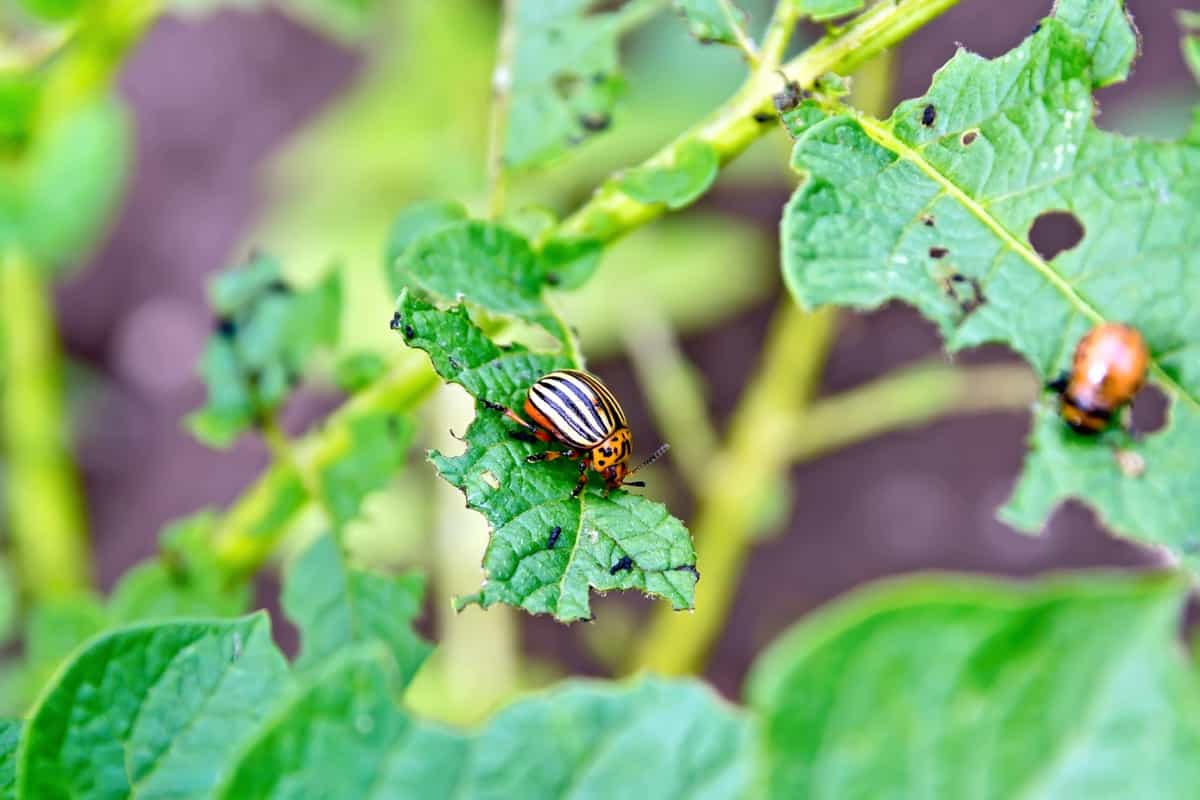
Lily Leaf Beetles (Lilioceris lilii): These are bright red beetles that feed exclusively on lilies (true lilies) and fritillaries (members of the lily family). They damage the plants by eating the leaves.
Effective Strategies for Controlling Japanese Beetles in Home Gardens
Japanese beetles are a destructive pest in the U.S., feeding on over 300 plant species and causing significant damage to leaves, flowers, and fruits. To control them in your home garden, use handpicking, traps, neem oil, milky spores, and beneficial insects. Handpicking is the simplest, most effective method, while traps can be used to lure and capture beetles, but be careful not to place them too close to plants.
Neem oil, a natural insecticide that repels and kills beetles and milky spores, is a biological control that infects beetle larvae in the soil, providing long-term control. Beneficial insects, like parasitic wasps, tachinid flies, ladybugs, lacewings, and spined soldier bugs, can also be used to attract or release beetles, reducing their numbers and preventing further damage.
Integrated Pest Management Approaches for Colorado Potato Beetle
The Colorado potato beetle is a significant pest that affects potatoes and other solanaceous crops like tomatoes, eggplants, and peppers. It can defoliate plants, reduce yield, and degrade quality. To effectively manage the beetle, an integrated pest management (IPM) approach combining cultural, biological, and chemical methods is recommended.
This includes crop rotation, planting resistant varieties like Russet Burbank, Kennebec, or Yukon Gold, using floating row covers to prevent beetles from laying eggs, using biological insecticides like Bacillus thuringiensis (Bt) to kill beetle larvae, and using natural insecticides like Spinosad to kill both larvae and adults of the beetle. These methods help prevent the build-up of beetle populations and ensure the health and quality of the crops.
Organic Solutions to Combat Cucumber Beetle Infestations in Vegetable Gardens
Cucumber beetles are small yellow or green beetles that feed on cucumbers, melons, squash, and pumpkins. They can transmit bacterial wilt and cucumber mosaic virus, causing plant wilting and stunting. To combat them organically, you can use companion planting, which involves planting flowers or herbs that repel or distract beetles, such as marigolds, nasturtiums, radishes, garlic, or mint. Kaolin clay, a fine white clay, can create a barrier on the plant surface and deter beetles from feeding.
Diatomaceous earth, made from fossilized algae, can cut and dehydrate beetles when they crawl over it. Pyrethrin, a natural insecticide extracted from chrysanthemum flowers, can knock down and kill beetles on contact. Spray these solutions on the plants early in the morning or late in the evening when bees are not active.
Life Cycle of Flea Beetles for Better Pest Control
Flea beetles are small, black, brown beetles that feed on crops like brassicas, corn, tomatoes, eggplants, and potatoes. They can create small holes or pits on leaves, reducing plant vigor and yield. To control them, understand their life cycle, which consists of four stages: egg, larvae, pupae, and adult.
Eggs hatch in late spring or early summer; larvae feed on plant roots or stems for 2-3 weeks, pupate in the soil, and emerge as adult beetles. Pupae remain in the soil for 1 to 2 weeks before emerging as adult beetles. Adult beetles are active from late summer to fall, feeding on plant foliage, overwintering in soil or debris, and emerging in spring.
Preventive Measures Against Asparagus Beetle Damage in Commercial Farms
Asparagus beetles, blue-black beetles with red or yellow markings, can damage asparagus spears and ferns, affecting crop quality and marketability. To prevent damage, sanitation, early harvest, row covers, and natural predators should be implemented. Sanitation involves removing old ferns and crop residues in the fall to eliminate overwintering sites.
In case you missed it: Citrus Fertilizer Management: Nutrient Requirements and Application Schedule
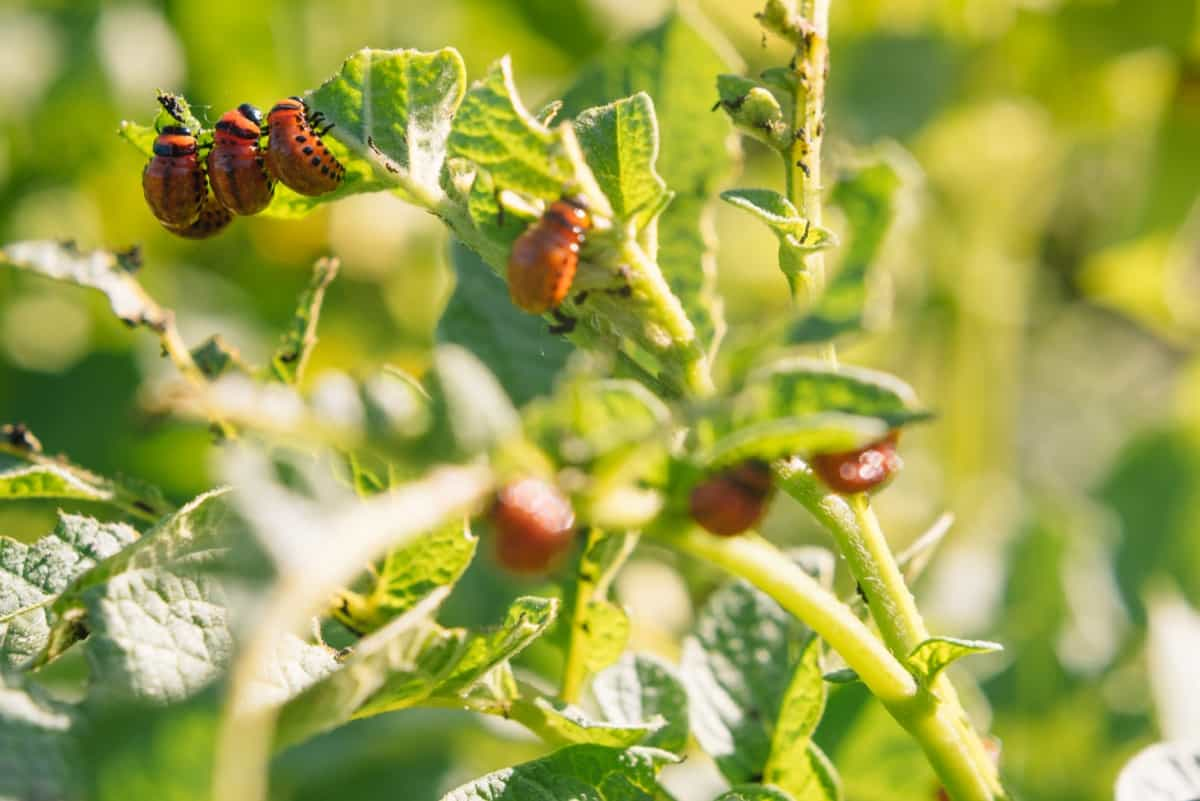
Early harvest ensures the spears are harvested as soon as they emerge in the spring, while row covers protect young spears from beetle attacks. Predators, such as ladybugs, lacewings, or spined soldier bugs, can also be encouraged to reduce the beetle population by feeding on their eggs or larvae.
Chemical and Non-Chemical Control Methods for Bean Leaf Beetles
Bean leaf beetles, yellow, green, or red, feed on legumes like beans, peas, soybeans, and clover. They can cause defoliation, pod damage, and seed transmission of bean pod mottle virus, reducing yield and quality. Control methods include crop rotation, planting resistant varieties, cultural practices, biological control, and chemical methods. Non-chemical methods include:
- Crop rotation with non-host crops.
- Planting early or late.
- Tilling or mowing field edges.
Biological control involves natural enemies like parasitic wasps, tachinid flies, or fungal pathogens, which can kill or suppress the beetle population. Chemical methods include using insecticides when significant beetle damage occurs or when the economic threshold level (ETL) is reached based on factors like crop stage, beetle density, defoliation level, and market price. Consult local extension services for specific recommendations.
Natural Predators and Biological Control of Vine Weevils in Ornamental Plants
Vine weevils are black or brown weevils that feed on ornamental plants like rhododendrons, azaleas, camellias, and begonias. They chew notches on leaf margins and cause wilting and death of plants. To control them naturally, predators like rove beetles, ground beetles, birds, and biological agents can be used.
Predators include small black beetles, which prey on vine weevil eggs and larvae in the soil; ground beetles, which hunt larvae at night; birds, which feed on vine weevil adults and larvae; and biological agents like nematodes, which infect and kill larvae in the soil, and fungi, which can be used to control the pest. By implementing these methods, you can control vine weevils and maintain healthy plant growth.
Innovative Techniques for Managing Lily Leaf Beetle Infestations
Lily leaf beetles are destructive pests that eat the leaves, stems, and buds of lilies and fritillaries, causing severe damage and reducing their aesthetic value. To manage infestations, innovative techniques include using biological control agents like parasitic wasps and predatory bugs, applying botanical insecticides like neem oil, pyrethrin, or spinosad, removing and destroying infested plant parts, using sticky traps to capture adult beetles, and planting resistant varieties of lilies or fritillaries with thicker leaves, hairy stems, or unpleasant tastes.
Impact of Climate Change on Beetle Pest Populations and Management Strategies
Climate change is changes in the distribution, abundance, and behavior of beetle pests that attack crops and plants. These pests include invasive species like emerald ash borer, Asian longhorned beetle, and red palm weevil, which can cause widespread damage. Climate change also alters the phenology and synchrony of beetle pests and their host plants, leading to more severe outbreaks or mismatches in pest control timing.
The development and reproduction of beetle pests are also enhanced by increasing temperature, humidity, and carbon dioxide levels, resulting in more generations per year and higher pest pressure. Biological control agents like predators, parasitoids, and pathogens are reduced in effectiveness due to the changing climate conditions. To cope with these changes, management strategies include:
- Monitoring and forecasting beetle pest activity.
- Implementing integrated pest management practices.
- Adopting climate-smart agriculture practices.
- Collaborating with stakeholders and policymakers to develop adaptation and mitigation plans for beetle pest management at local, regional, and global scales.
In case you missed it: Pest Management in Paddy at Panicle Initiation Stage: Best Pest Control Strategies
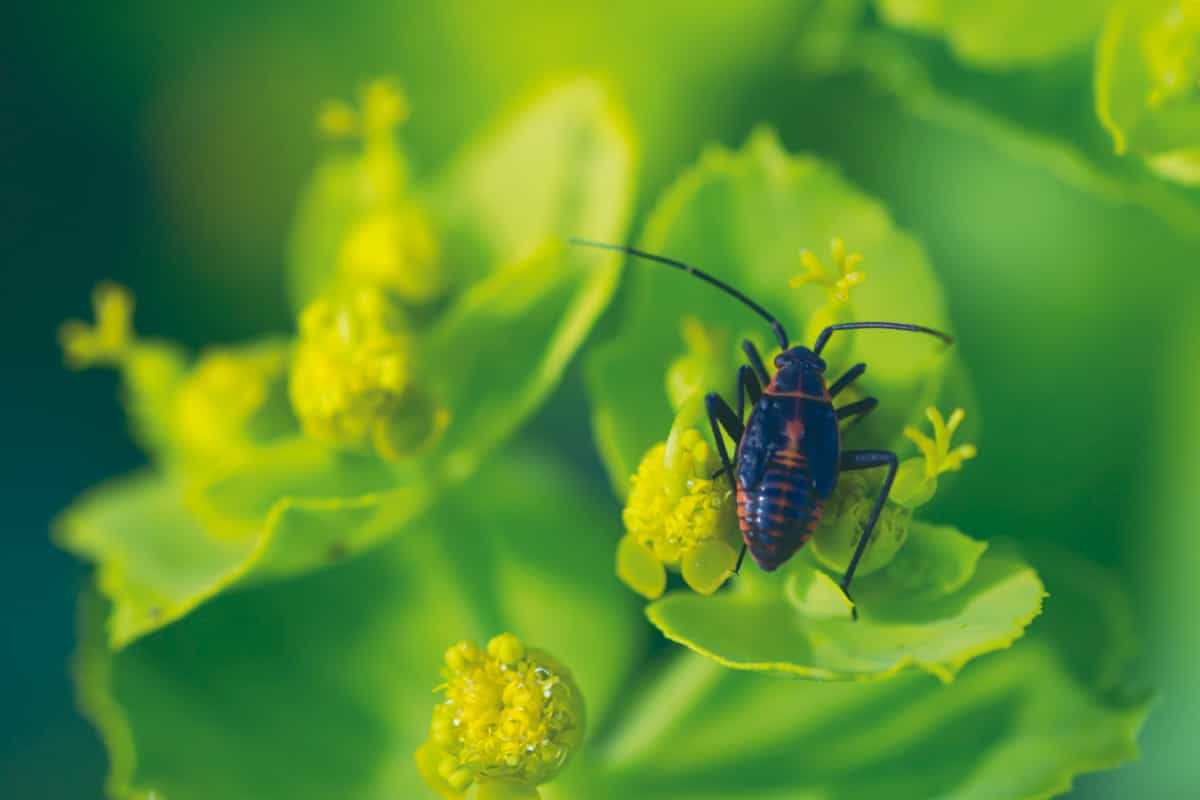
Home Remedies and Eco-Friendly Solutions for Beetle Pests in Urban Gardens
Urban gardens are increasingly popular for growing fresh food, beautifying the environment, and improving well-being. However, they can attract beetle pests that can damage plants and reduce yield.
Home remedies and eco-friendly solutions for beetle pests in urban gardens include spraying a mixture of water, soap, and garlic or hot pepper on plants, spraying diatomaceous earth, wood ash, or coffee grounds on the soil or around plants, introducing beneficial insects like ladybugs, lacewings, or soldier beetles, and growing companion plants like marigolds, basil, or mint to attract beneficial insects, repel beetle pests, or mask the scent of host plants.
The Role of Soil Health in Preventing Beetle Infestations in Plants
Soil health is crucial for plant growth, biodiversity, and ecosystem functions. It can influence beetle infestations by affecting the availability of nutrients, water, and oxygen, the diversity of soil organisms, and the physical structure of soil. To improve soil health, practices include applying organic matter, avoiding excessive tillage, rotating crops, and using biofertilizers, biopesticides, or biocontrol agents.
These practices can improve soil fertility, structure, and biological activity and prevent beetle infestations. Additionally, avoiding excessive tillage, intercropping, or trap crops can break the pest cycle and divert pest attention from the main crop.
Effective Beetle Management in Organic Farming
Organic farming relies on natural inputs and processes to produce food and fiber without synthetic chemicals or genetically modified organisms. However, managing beetle pests can be challenging due to limited pest control methods. Effective beetle management techniques include using resistant crops, practicing crop rotation, enhancing natural enemies, applying botanical pesticides, and employing physical methods like handpicking, trapping, or flaming.
These methods can provide multiple benefits, such as pest suppression, nutrient cycling, and weed control. However, the availability and efficacy of organic pest control methods remain limited.
Utilizing Companion Planting to Deter Beetle Pests in Gardens
Companion planting is growing plants together to benefit each other in terms of growth, yield, or pest control. It can deter beetle pests in gardens by producing volatile compounds that repel or interfere with their host-finding behavior, providing nectar or pollen that attract beneficial insects, acting as trap crops that lure beetle pests away from the main crop, and serving as sacrificial crops that sacrifice themselves to beetle pests and protect the main crop.
Challenges and Solutions in Managing Beetles in Greenhouse
Greenhouses have a controlled environment for growing plants, extending the growing season and increasing crop yield. However, they also pose challenges in managing beetles, such as creating favorable conditions for pests, providing continuous host plants, limiting natural enemies’ access, and increasing the risk of resistance development and secondary pest outbreaks.
In case you missed it: Weed Management in Onion Farms: Control with Organic, Mechanical, Biological, and Herbicides
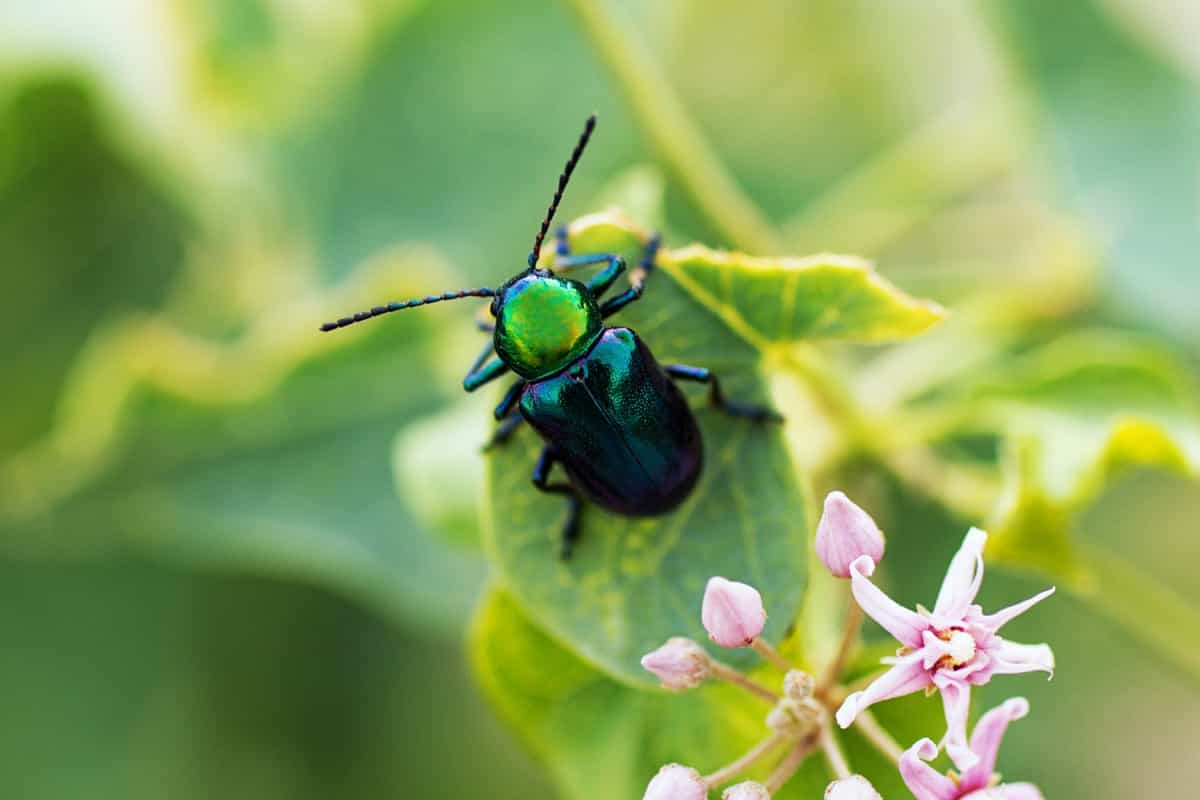
Solutions include implementing cultural practices like sanitation, ventilation, and screening, using biological control agents like predatory mites, ladybugs, or parasitic wasps, applying selective pesticides, and integrating multiple methods like cultural, biological, and chemical control to achieve optimal and sustainable control of beetle pests in greenhouses. These solutions aim to limit the risk of resistance development and secondary pest outbreaks while ensuring the health and quality of the crops.
Role of Beetle Management in Sustainable Agriculture Practices
Sustainable agriculture aims to meet needs without compromising future generations’ ability to meet their own. It conserves natural resources, protects the environment, and enhances social and economic well-being. Beetle management is crucial in sustainable agriculture practices, reducing crop losses, preserving biodiversity, and minimizing environmental pollution. Alternatives to synthetic pesticides, such as biological control agents and botanical pesticides, are also adopted. Innovation and adaptation are promoted through the development of new technologies and strategies.
DIY Beetle Traps and Barriers for Small-Scale Farmers
Beetles are a common pest in crops like brassicas, potatoes, and tomatoes, causing significant damage. Small-scale farmers can protect their crops from beetle attacks by using trapping methods. Yellow sticky traps are a simple and inexpensive method, while trap crops, like turnip rape, are planted around or within the main crop to lure beetles away.
Physical barriers like row covers, nets, or fences can also be used to exclude beetles from the crop. These materials block insects from entering the crop, preventing light and air from passing through. Regular checks and replacements are crucial to maintain their effectiveness.
Advancements in Beetle Identification and Monitoring
Beetle identification and monitoring are crucial for small-scale farmers in Integrated Pest Management (IPM). However, these tasks can be challenging due to a lack of expert advice and reliable information. Advancements in molecular techniques like DNA barcoding can help identify difficult-to-distinguish beetles and detect new or invasive species.
Digital tools like smartphone apps and online databases can help farmers monitor beetles, record data, and share information. Examples include Naturalist, which allows users to upload photos and receive feedback, and Bugwood, which provides information on beetle biology, identification, management, and impacts.
In case you missed it: Integrated Pest Management in Landscaping: IPM Strategies for Sustainable Landscaping
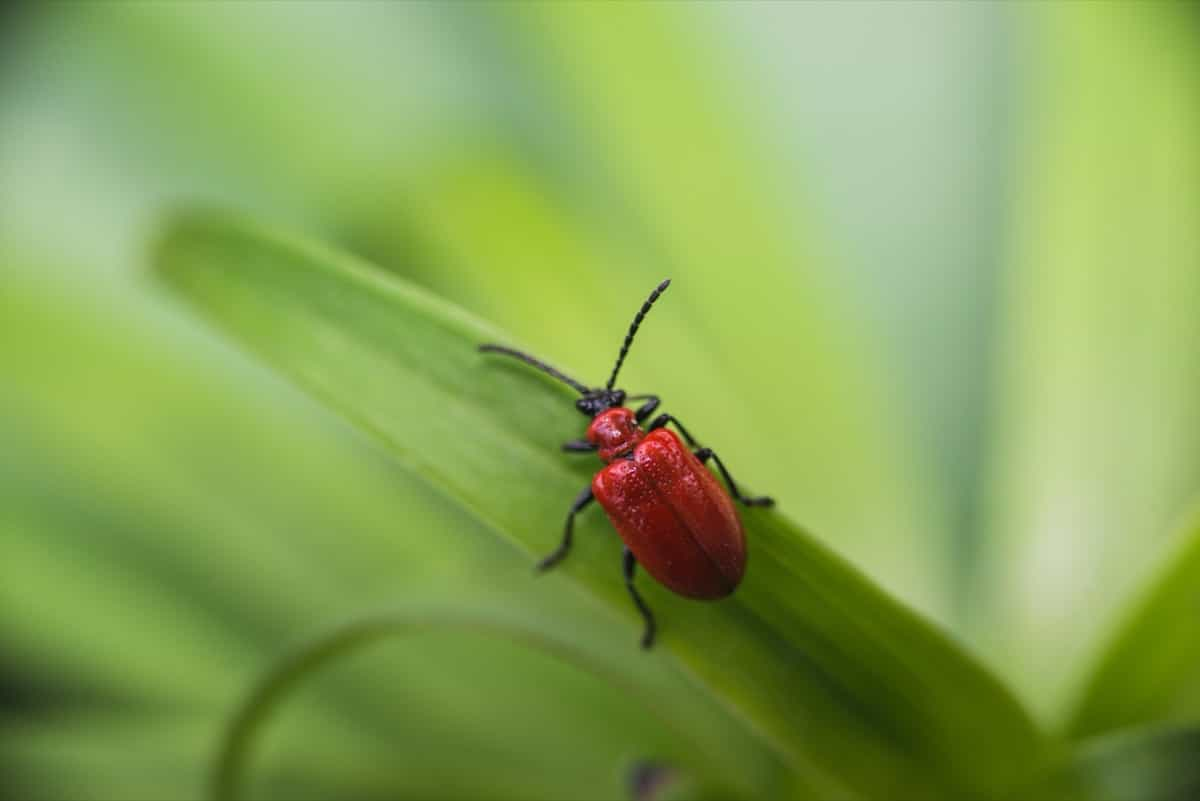
Conclusion
Beetles pose a significant threat to small-scale farmers’ crops. To effectively control them, they can use DIY traps, barriers, and molecular techniques. Regular monitoring and use of affordable digital tools can further enhance their IPM practices and protect their crops.
- Types of Pesticides Used in Agriculture: A Beginner’s Guide
- Economical Aquaculture: A Guide to Low-Budget Fish Farming
- 15 Common Planting Errors That Can Doom Your Fruit Trees
- How to Make Houseplants Bushy: Effective Tips and Ideas
- Innovative Strategies for Boosting Coconut Pollination and Yield
- Pollination Strategies for Maximum Pumpkin Yield
- The Complete Guide to Chicken Fattening: Strategies for Maximum Growth
- Natural Solutions for Tulip Problems: 100% Effective Remedies for Leaf and Bulb-Related Issues
- Revolutionizing Citrus Preservation: Towards a Healthier, Greener Future
- Natural Solutions for Peony Leaf and Flower Problems: 100% Effective Remedies
- Maximizing Profits with Avocado Contract Farming in India: A Comprehensive Guide
- Natural Solutions for Hydrangea Problems: 100% Effective Remedies for Leaf and Flowers
- The Ultimate Guide to Choosing the Perfect Foliage Friend: Bringing Life Indoors
- From Sunlight to Sustainability: 15 Ways to Use Solar Technology in Agriculture
- The Ultimate Guide to Dong Tao Chicken: Exploring from History to Raising
- The Eco-Friendly Makeover: How to Convert Your Unused Swimming Pool into a Fish Pond
- Mastering the Art of Delaware Chicken Farming: Essentials for Healthy Backyard Flocks
- 20 Best Homemade Fertilizers for Money Plant: DIY Recipes and Application Methods
- How to Craft a Comprehensive Free-Range Chicken Farming Business Plan
- Brighten Your Flock: Raising Easter Egger Chickens for Beauty and Bounty
- How to Optimize Your Poultry Egg Farm Business Plan with These Strategies
- Subsidy for Spirulina Cultivation: How Indian Government Schemes Encouraging Spirulina Farmers
- Ultimate Guide to Raising Dominique Chickens: Breeding, Feeding, Egg-Production, and Care
- Mastering the Art of Raising Jersey Giant Chickens: Care, Feeding, and More
- Ultimate Guide to Raising Legbar Chickens: Breeding, Farming Practices, Diet, Egg-Production
- How to Raise Welsummer Chickens: A Comprehensive Guide for Beginners
- How to Protect Indoor Plants in Winter: A Comprehensive Guide
- Ultimate Guide to Grow Bag Gardening: Tips, Tricks, and Planting Ideas for Urban Gardeners
- Guide to Lotus Cultivation: How to Propagate, Plant, Grow, Care, Cost, and Profit
- Agriculture Drone Subsidy Scheme: Government Kisan Subsidy, License, and How to Apply Online
- Ultimate Guide to Raising Araucana Chickens: Breed Profile, Farming Economics, Diet, and Care
- Bringing Hydroponics to Classroom: Importance, Benefits of Learning for School Students
- Ultimate Guide to Raising Polish Chickens: Breed Profile, Farming Economics, Diet, and Care
- Ultimate Guide to Raising Australorp Chickens: Profile, Farming Economics, Egg Production, Diet, and Care
- Silkie Chicken Farming: Raising Practices, Varieties, Egg Production, Diet, and Care
- Sussex Chicken Farming: Raising Practices, Varieties, Egg Production, Diet and Care